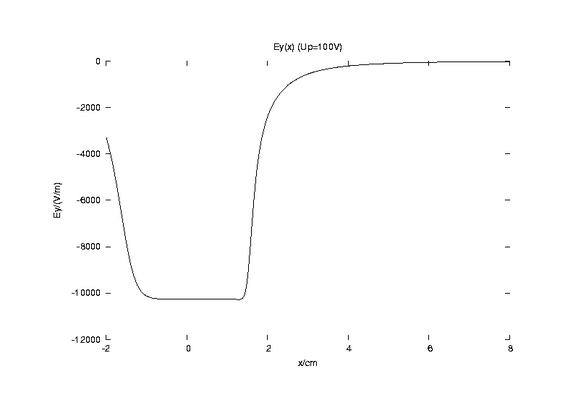Description:
The package PlattenC.tgz serves for the computation of the
non-relativistic trajectory of an electron passing through
a charged plate capacitor with square plates.
The influence of the field at the rim of the capacitor has been of
special interest for a lecture on the basics in
electrostatic field theory by Prof. Schwarz (IEE, TU-Dresden).
The electrostatic field of the capacitor is computed by a simple
boundary element method (method of moments) implemented in
plattenC.cc. The dynamical interaction of the electron charge and the
charge on the capacitor plates is not regarded.
The non-relativistic trajectory of the electron is computed by an explicite
Runge-Kutta method implemented in Maths/tobiRungeKutta.cc.
Note, that the package was not realy intented for a release. Up to the
moment it lacks any concise description.
Maybe, you can gather some useful information from the Makefile.
If the Makefile fails, you have bad luck.
|
Author:
|
Tobias Nähring
|
|
License:
|
GPL (http://www.gnu.org/)
|
|
Version:
|
0.0.1
|
|
Requirements:
|
Linux;
g++ ≥ 2.95;
gnuplot ≥ 3.7;
gnu-make ≥ 3.8;
a recent latex distribution
|
|
Download:
|
PlattenC.tgz
|
Results
Figure 1: At first the setup of the model:
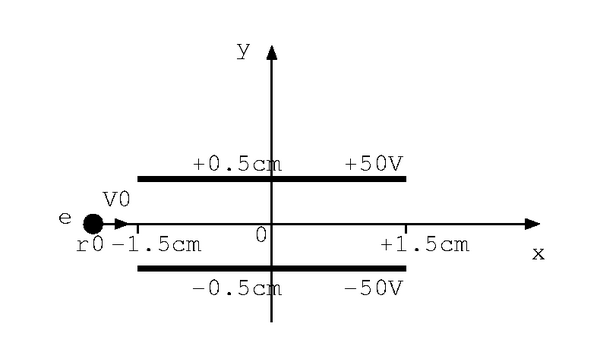
Figure 2:
The iso-potential lines of the electrostatic potential of the
plate capacitor and the trajectory of the electron
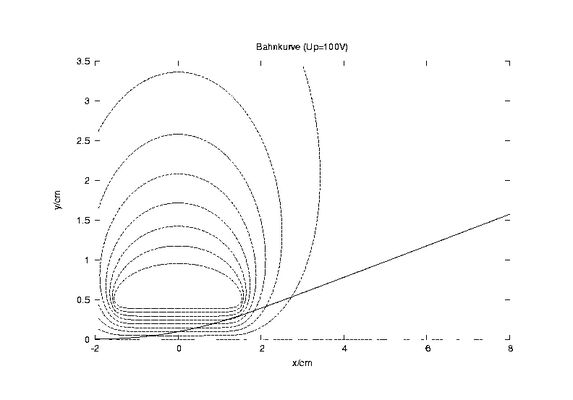
Figures 3 and 4:
The speed of the electron in x- and y-direction
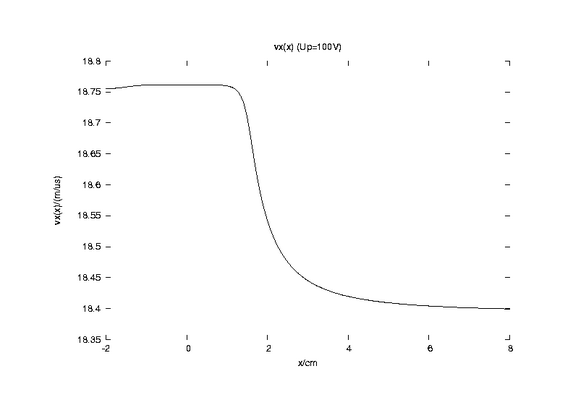
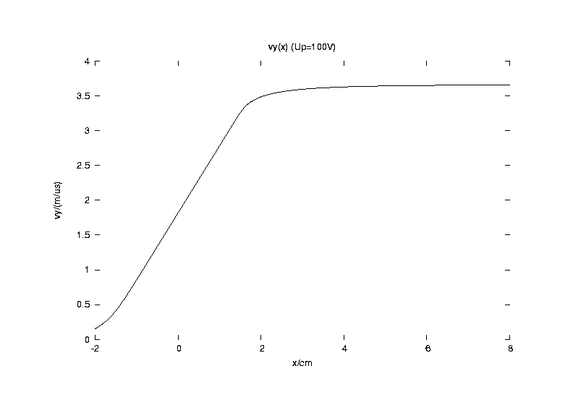
Figure 5:
The absolute value of the speed.
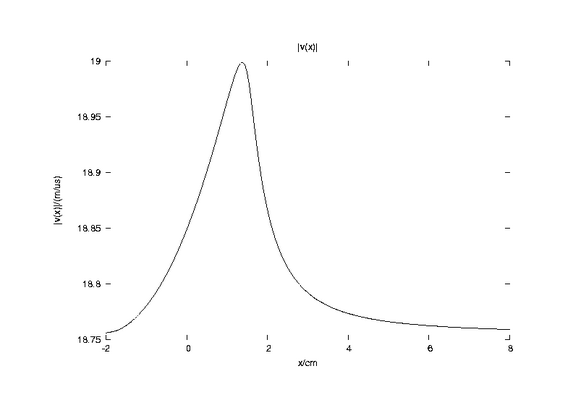
Here, we see that finally the electron looses all its kinetic energy
gained while dropping into the potential pot of the positive capacitor
plate. Please take a further look on figure 2 and note that at the
rim of the capacitor the electron runs up the potential barrier almost
perpenticular to the iso-potential lines. So, the velocity vector of
the electron changes mainly in absolute value and (almost) not
in direction.
Figure 6: The x-component of the electrical field strength at the
momentary position of the electron.
(vs. x-position of the electron).
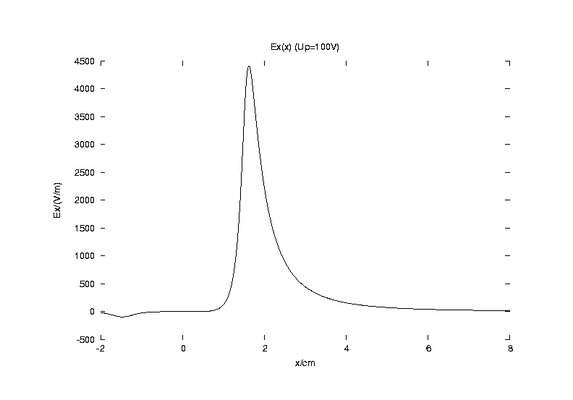
Figure 7: The y-component of the electrical field strength at the
momentary position of the electron.
(vs. x-position of the electron).
